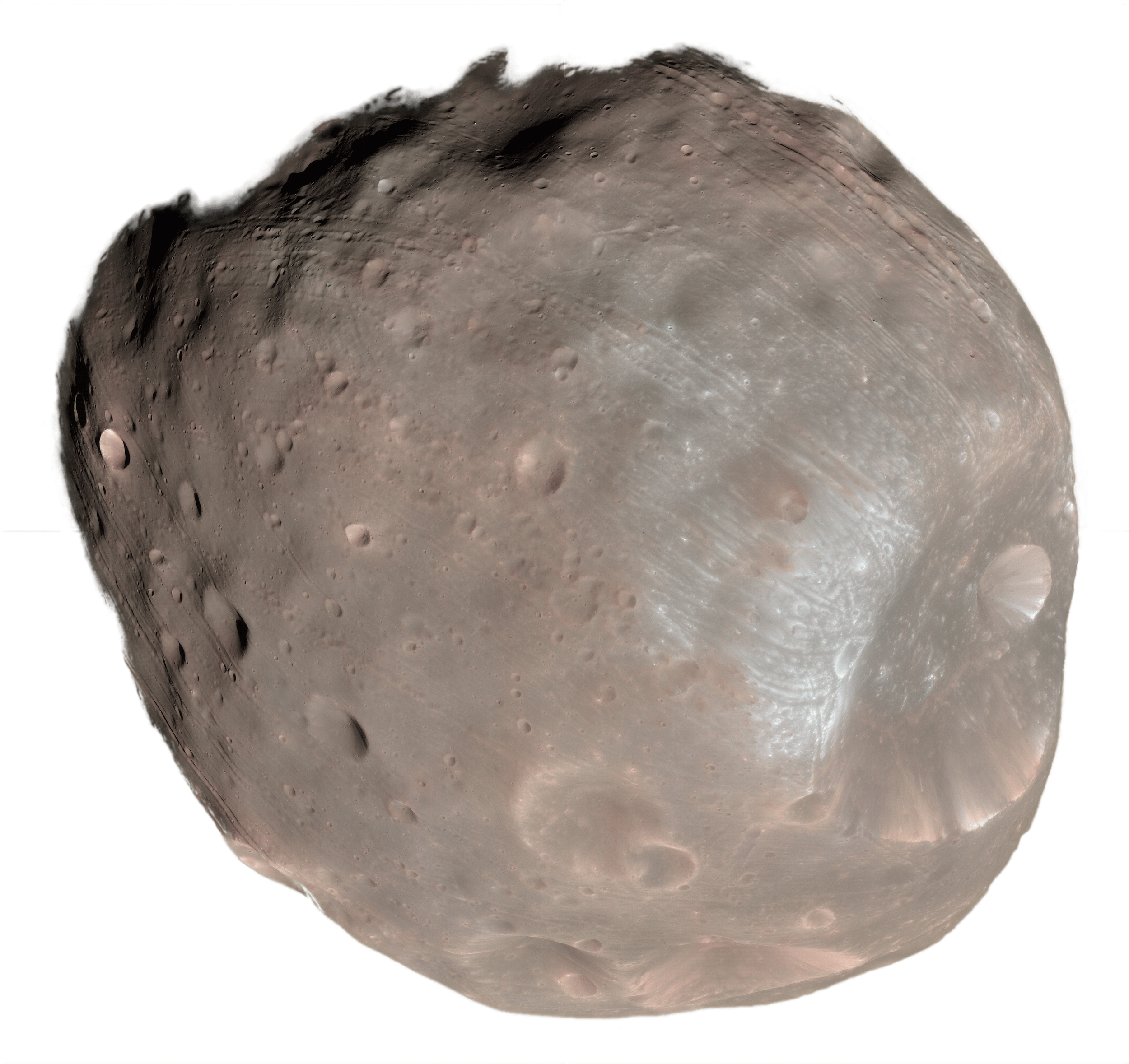Phobos
This Martian moon is the closest moon to orbit any planet. Learn all about Phobos here!
Formation
The formation of the Martian moon Phobos is still a subject of scientific investigation and debate. One prevalent theory suggests that Phobos was formed from debris generated by a massive impact on Mars, like the way our Moon is thought to have formed. This impact hypothesis proposes that material ejected during the collision eventually coalesced to create Phobos. Another hypothesis proposes that Phobos might be a captured asteroid that was drawn into Mars' gravitational pull. Phobos' irregular shape, its close orbit to Mars, and its porous composition continue to intrigue researchers and their attempts to discover the origin of Phobos.
Surface
The surface of Phobos reveals a rugged and fascinating terrain. Covered in a layer of fine dust and debris, Phobos displays a landscape defined by its heavily cratered features. These craters are interconnected by a network of grooves and linear markings, thought to be a consequence of both meteor impacts and the moon's own gravitational interactions. The largest crater, Stickney, stands out prominently and has influenced the moon's overall appearance. Phobos' unique surface characteristics provide insights into its history and relationship with Mars.
Structure
Phobos possesses an intriguing and irregular structure. This moon is often described as an oblong, lumpy body with a shape resembling a potato or an almond. Phobos' interior is believed to be porous and less dense than solid rock, suggesting that it might contain voids or cavities. This porous nature, combined with its low gravity, makes Phobos structurally fragile. Its origin, either as a captured asteroid or a product of Martian debris, likely contributes to its unique structure.
Satellites
Several spacecraft have captured images of Phobos, providing valuable insights into its characteristics. The list includes Mariner 7, which flew by Mars in 1969 and captured images of Phobos; Viking 1 and Viking 2, both of which orbited Mars and photographed Phobos in 1977; the Soviet Union's Phobos 2, which gathered images during its 1989 mission; Mars Global Surveyor, Mars Odyssey, and Mars Express, which all captured images from Mars' orbit; Mars Reconnaissance Orbiter, renowned for its high-resolution imagery of Phobos; NASA's Curiosity Rover, which took pictures of Phobos from the Martian surface; and the InSight Lander, which also captured images of Phobos from Mars' surface. These missions collectively contribute to our understanding of Phobos' surface features, composition, and overall nature.

